Six Steps to Buzzwothy Garden Bee-uty
March 2022. By Isara Ongwiseth: Angelenos have always asked how to bring birds and butterflies to gardens. More and more, we get requests for bee-utiful gardens too! It’s really no wonder why – there are so many benefits to having native bees nearby.
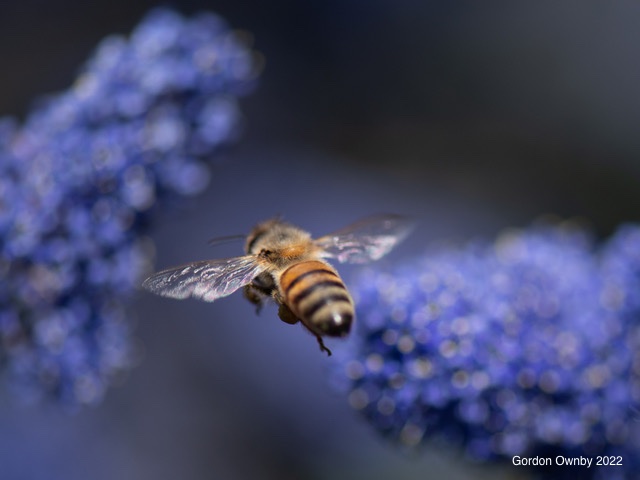
We bring beneficial bees to the garden by being beneficial to them! We:
Aim for Buzz-worthy Foliage
As California lilac turns blue in March, it will begin to buzz and tremble as it fills with bees. It is hands-down one of the most buzz-worthy plants we know – and it will definitely get people buzzing about it too. It may be hard to believe, but Bee’s Bliss Salivia is another great choice!
Bonus: If you have edible gardens, well-fed bees will amplify your yield. When blissed by Bliss and ceanothus, they will also let you and your hors d’overs be!
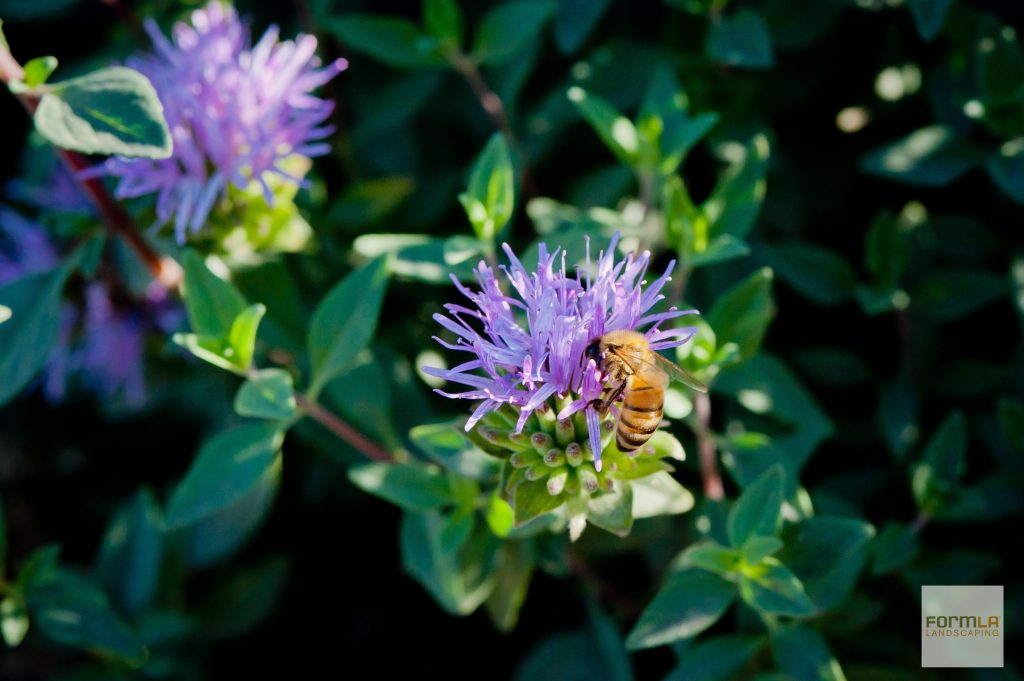
Design for Year-Round Blooms
Like birds and butterflies – and the rest of us – bees appreciate year round sustenance. Manzanita, Bladderpod and Western Redbud can keep bee-bellies nice and round through the winter, while Coyote Mint, Penstemon, and Buckwheats can provide this service in the high heat of summer. Indian Mallow is open for dining (almost) 365.
Bonus: If you plant for bee-health, your garden will evolve each month, offering new opportunities for awe and delight.
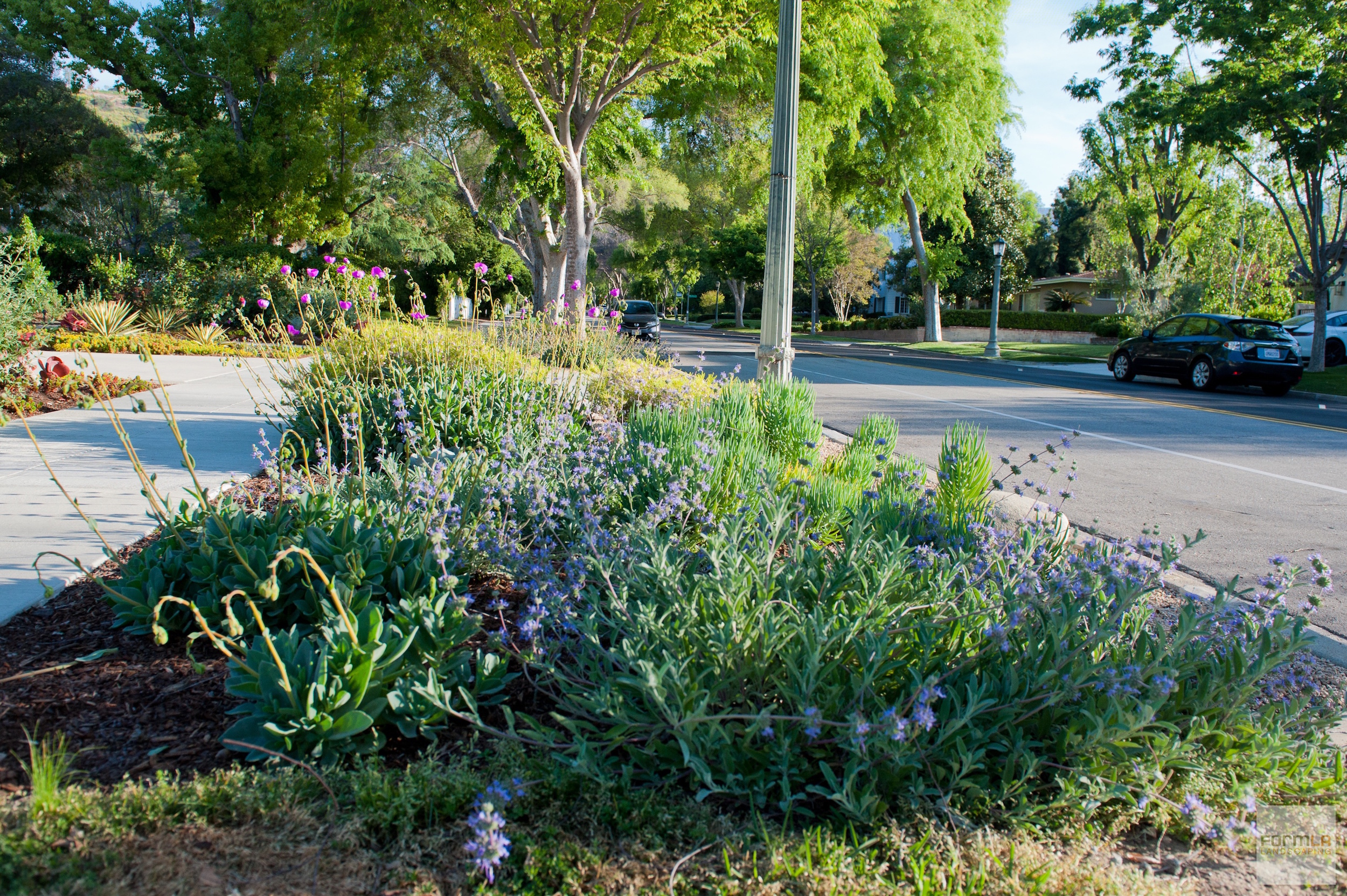
Plant in Families
To attract bees, particularly to areas without a preponderance of native foliage, plant bee-utiful foliage in families of 3-5. This will help pollinators of all types find it.
Bonus: Nature tends to plant in families too. When we mirror her preferences, it results in the naturalistic forms shown to reduce stress and aid healing.
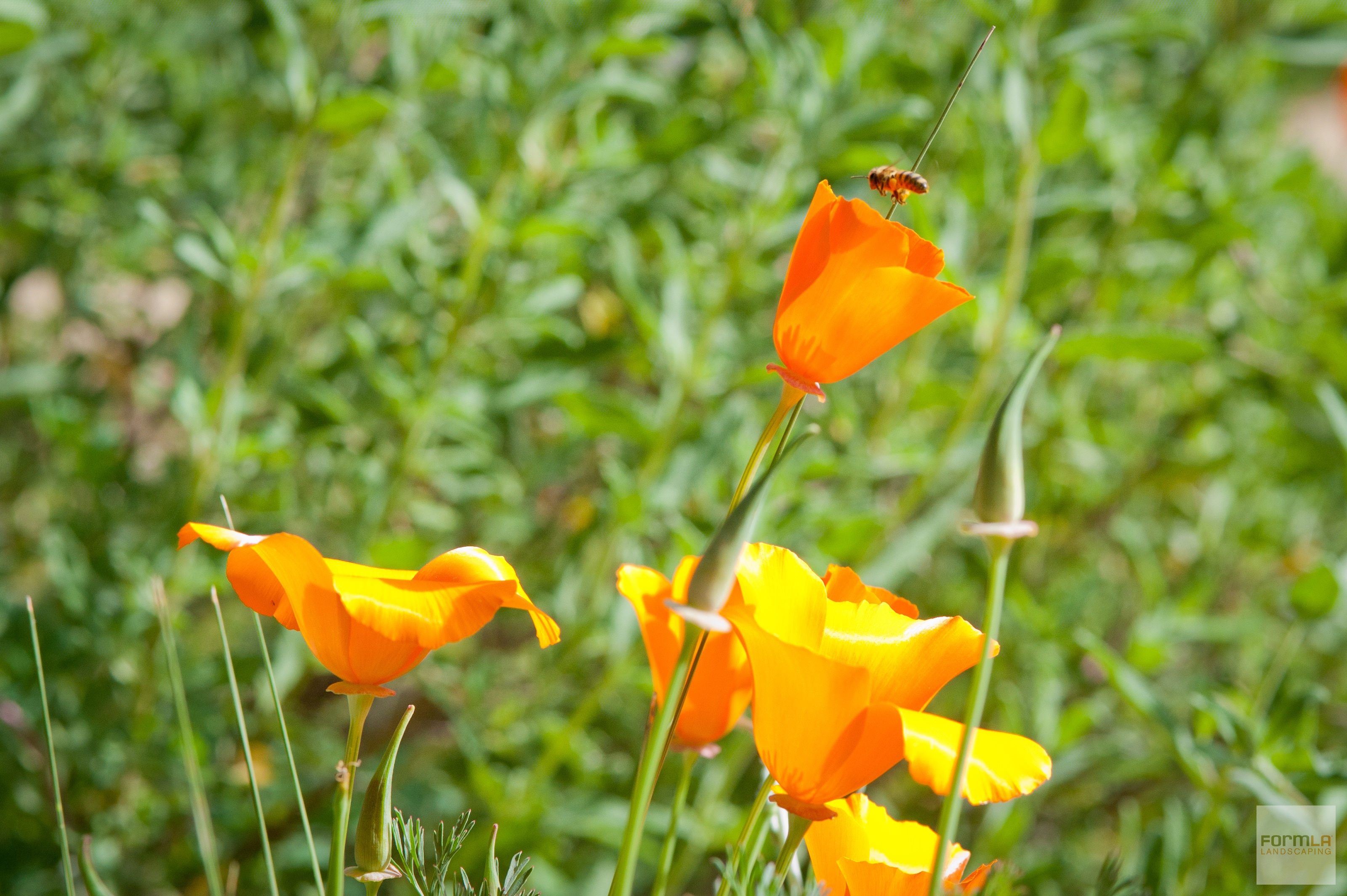
Water Smart
Yes, bees appreciate a drop or two, but not when it is flying through the air! Overhead sprinklers can turn buzzing around your garden more dangerous than delightful. Smart, subsurface drip irrigation on weather based controllers give them safe space to work their magic.
Bonus: We can wax poetic about smart irrigation. We aren’t alone – it has one of the highest joy scores of any landscape remodel decision.
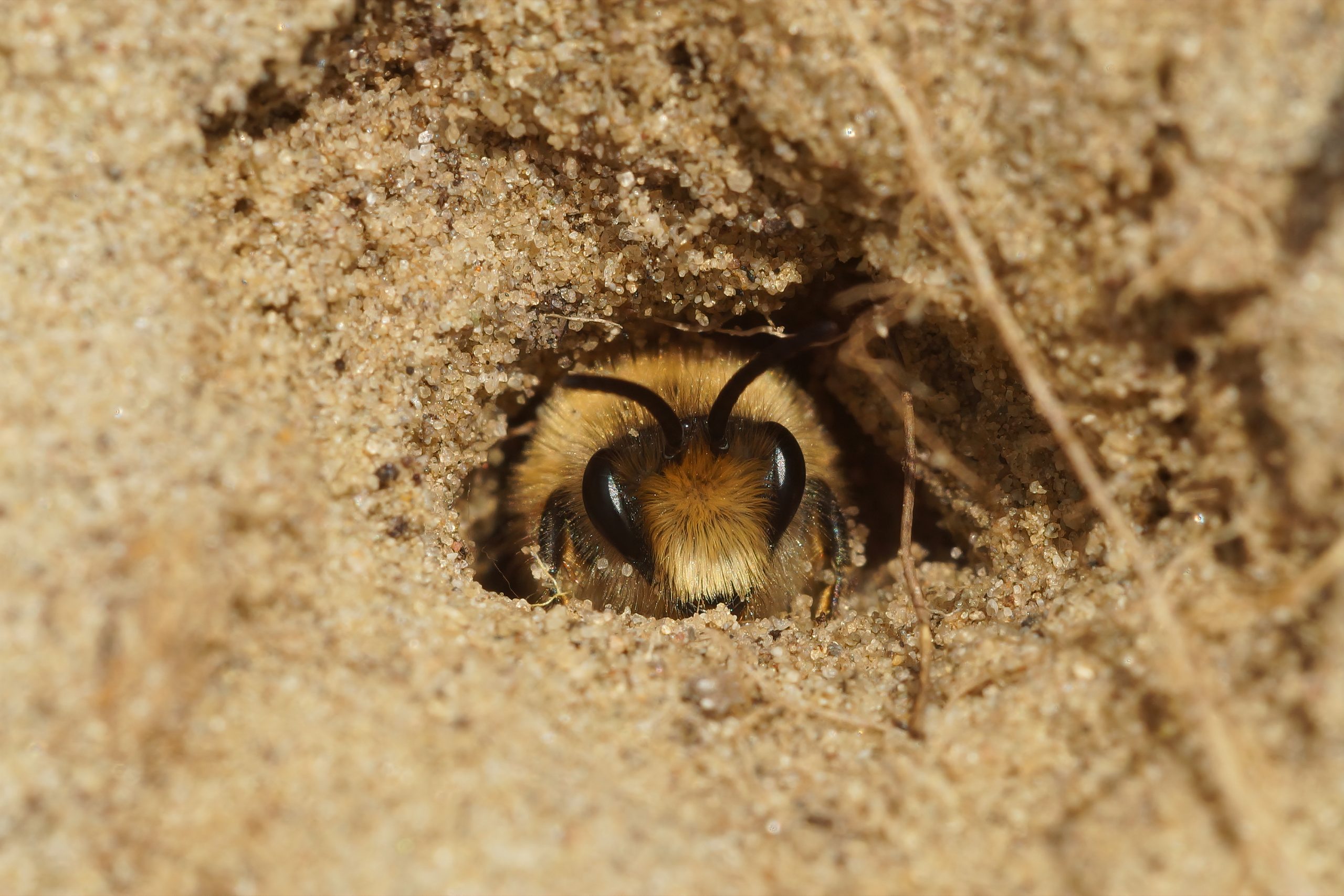
Leave a Little Soil
Some native bees nest in soil. According to Las Pilitas Nursery, not only will they dig their own homes, they may utilize tunnels built by others.
Bonus: When planting shrubs, provide space between foliage. This ensures its long term health, supports a landscape’s fire-defensive qualities, and leaves room for bees to make rooms of their own.
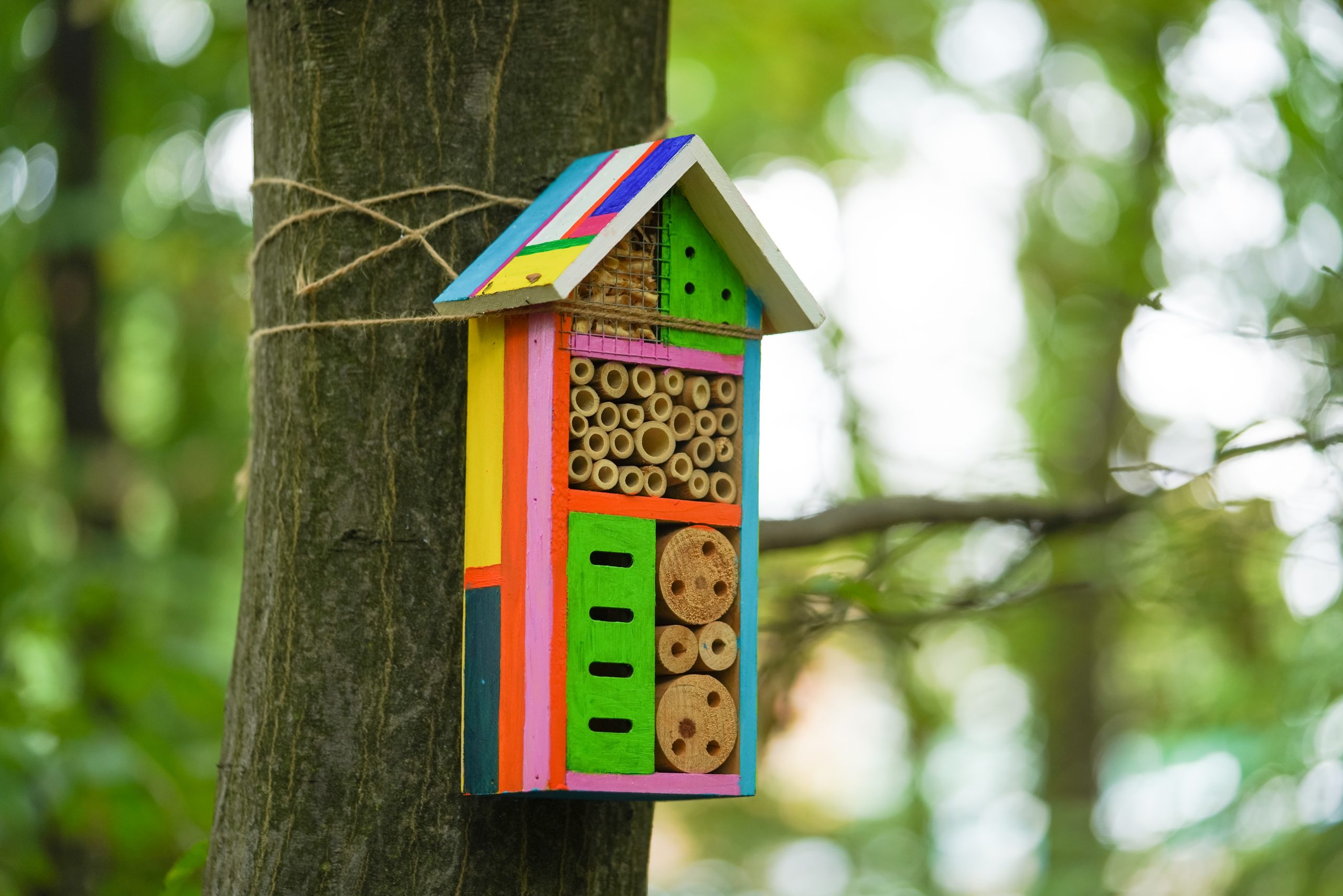
Add Homes
Native wood (carpenter) bees make their nests in… would you like to guess? Wood! Adorable wood bee homes will help them live their bee-est life.
Bonus: Bees don’t need human-built homes. They love to work with whatever dry wood you have – fences, siding, firewood. Providing bee homes (or hotels, if you are so inspired) will protect wood features in your landscape as well as your home from their artistry.
At the end of the day, what it takes to make your garden buzz worthy will also fill it with song and butterflies – or humans – happy.
LA Bee Garden Palette
Follow FormLA Landscaping’s board Blooming Now: August in LA on Pinterest.
Sources and Resources
- Las Pilots Nursery: Plants to Attract Native Bees
- SF Gate: Carpenter Bee Holes in Fences
- Theodore Payne Foundation: 100 Plants to Feed the Bees
- UC Davis Arboretum: Learn More About California Native Beess
- USDA: Native Bee Benefits
- Xerces Society: Enhancing Nest Sites for Native Bee Crop Pollinators
